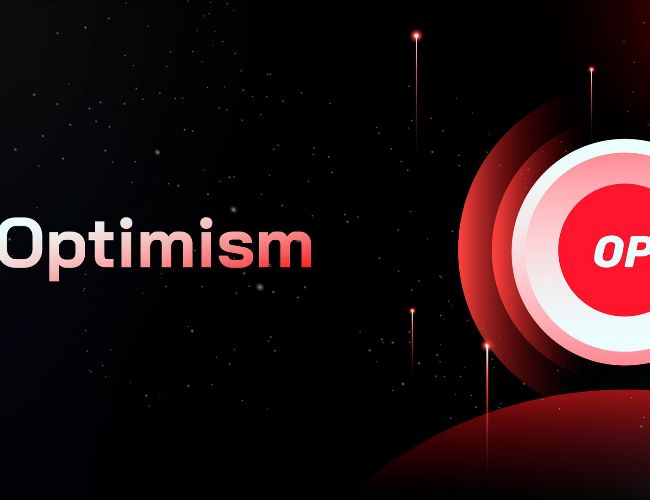One of the biggest rollup networks on Ethereum is finally gearing up its systems for prime time.
Optimism, a “layer-2” blockchain, bundles up user transactions and settles them on Ethereum for cheap. It has played a lead role in expanding accessibility to the second-largest blockchain ecosystem by market capitalization – and serves as the template for the publicly traded crypto exchange Coinbase’s own layer-2 network, Base.
But there’s a catch to using Optimism today: Fault proofs, a component of the setup considered crucial for security, don’t even exist. That’s soon set to change.
On Tuesday, OP Labs, the main development firm behind the Optimism blockchain, will begin testing fault proofs on Ethereum’s Sepolia test network. Karl Floersch, co-founder of Optimism and CEO of OP Labs, told CoinDesk he expects the proofs to reach Ethereum’s main network later this year.
The tech will help secure withdrawals from the network, and it has been a long time coming – exposing the Optimism ecosystem to embarrassing criticism from advocates of rival blockchains.
Rollups and fault proofs
The Ethereum network, stifled for the past few years by sky-high transaction fees, has over the past two years turned to layer-2 rollup networks like Optimism to alleviate congestion.
Optimism and similar rollups aim to borrow their security from Ethereum, meaning recording transactions should be tantamount to writing transactions directly onto Ethereum. Optimism is currently the third-largest rollup network in terms of transaction volume, with $950 million in total deposits, according to DefiLlama. The chain’s technology also powers the second and fourth-largest layer-2 networks, Coinbase’s Base network and Blast, a buzzy newcomer to the rollup race.
Read more: What Are Layer 2s and Why Are They Important?
When rollups pass user transactions to Ethereum, they do so by bundling big groups of transactions into large batches. They then “settle” those transactions onto the main chain all at once, which lets them offer transactions to users for a fraction of the cost.
In theory, rollups are supposed to secure themselves via “proofs,” which are mathematical formulas that Ethereum network observers can reference to check if the data passed down from the rollups reflects real user activity.
The proof systems are ultimately supposed to make good on rollups’ primary value proposition, which is to provide cheaper access to Ethereum without compromising on the decentralization and trustlessness that separate blockchains from legacy finance and Web2 systems.
Today, Optimism lacks fault proofs, meaning users need to trust Optimism’s programming – or the “security council” that watches over the protocol – to keep withdrawals secure. The security council is just a group of people – not exactly in keeping with the crypto ethos of decentralized, code-based protocols that aren’t vulnerable to human whims, biases and schemes.
“Fault proofs allow for permissionless, crypto-economically enforced withdrawals,” Floersch explained in an interview with CoinDesk. “Today, on the chain, you must trust the security council to operate honestly in order to keep your withdrawals secured.”
Optimism’s security council includes several well-known members of the crypto industry, including representatives of OP Labs, the Ethereum Foundation and Coinbase. They operate a multi-signature wallet that has certain powers over the protocol and can be used to approve upgrades to its code.
In the future, Floersch says, withdrawals will be secured such that “even the worst security council cannot mess with you.”
Round two
Optimism had a version of fraud proofs when it launched in 2020, but the system was deemed insufficient and later scrapped entirely.
“We made a fatal error” when launching those first fraud proofs, said Floersch. “This fatal error was that we were so entranced with getting to proofs as quickly as possible that we made a large number of sacrifices in the quality of the system.”
The biggest sacrifice, according to Floersch, was that the initial proof system was “compatible” rather than “equivalent” to the Ethereum virtual machine (EVM), meaning there were certain elements of its programming that would complicate the process of porting apps to Optimism, and would make it more difficult for the whole system to scale.
Optimism deposits have ballooned by almost $1 billion since its fraud proofs went to the wayside, and the OP Labs team has open-sourced elements of its technology under the “OP Stack” – a blockchain-building framework used by some of the biggest layer-2 ecosystems of the day, including Base.
The new proof system, which Optimism calls a “fault” proof system rather than a “fraud” proof system, will be EVM equivalent rather than EVM compatible, which should help it support apps more seamlessly than the old setup. Floersch says it’s also been designed with a particular eye to modularity, meaning it will come with different components that can be swapped out according to a chain’s use case – like if a network plans to use proofs powered by zero-knowledge (ZK) cryptography.
Under Optimism’s old proof system, “it was like building a shack out of sticks,” said Floersch. “We’re like, ‘Alright, we can get up real quick, but we can’t actually build a skyscraper with this thing. So it ended up not being that useful.”
With the “building blocks” provided by Optimism’s new system, “you can start stacking them on top of each other and building a really sturdy structure,” said Floersch. “Now we’re set to build the Empire State Building.”
Training wheels
When it comes to its still-in-progress inner-workings, Optimism isn’t an outlier. All rollup networks have resorted to using different types of “training wheels,” which are supposed to help the layer-2 networks safely welcome new users even as they’re ironing out certain technical elements of their systems.
The Ethereum community has gravitated towards identifying rollups in terms of “stages,” where stage 0 rollups use training wheels and require trust from users to work, and stage 2 rollups are more-or-less identical to Ethereum in terms of their permissionless and security. Stage 1 systems sit somewhere in between.
According to L2Beat, a widely-referenced layer 2 watchdog service, Optimism is considered a “stage 0” rollup whereas Arbitrum, Optimism’s biggest competitor, is considered “stage 1” since it already has a working proof system.
For either service to reach the final stage, they’ll need to further decentralize – which means not just introducing fault/fraud proofs, but deploying the systems such that no security councils or other entities have privileged access over the protocol.
Floersch wouldn’t predict when Optimism would reach stage 2: “If the fault-proof system is not fully ready,” said the Optimism founder, “then there needs to be a way for manual intervention to come in and update the systems.”
OP the Tortoise
Optimism’s delayed timeline for re-introducing proofs has made it the butt of criticism in some corners of the blockchain industry.
“Making sure that folks actually decentralized – actually build out full proofs – is super fair, super healthy and great for the ecosystem,” said Floersch. “That time that we took – yes, it costs us on Twitter or whatever, but ultimately what I think is the most important is that this is a long-term game.”
According to Floersch, Optimism’s deliberate pace has ultimately put it on a faster timeline.
“What we have been trying to do, and what we are dedicated to, is building out a stage-2 fully decentralized system as quickly as possible,” he asserted.
Read the full article here









